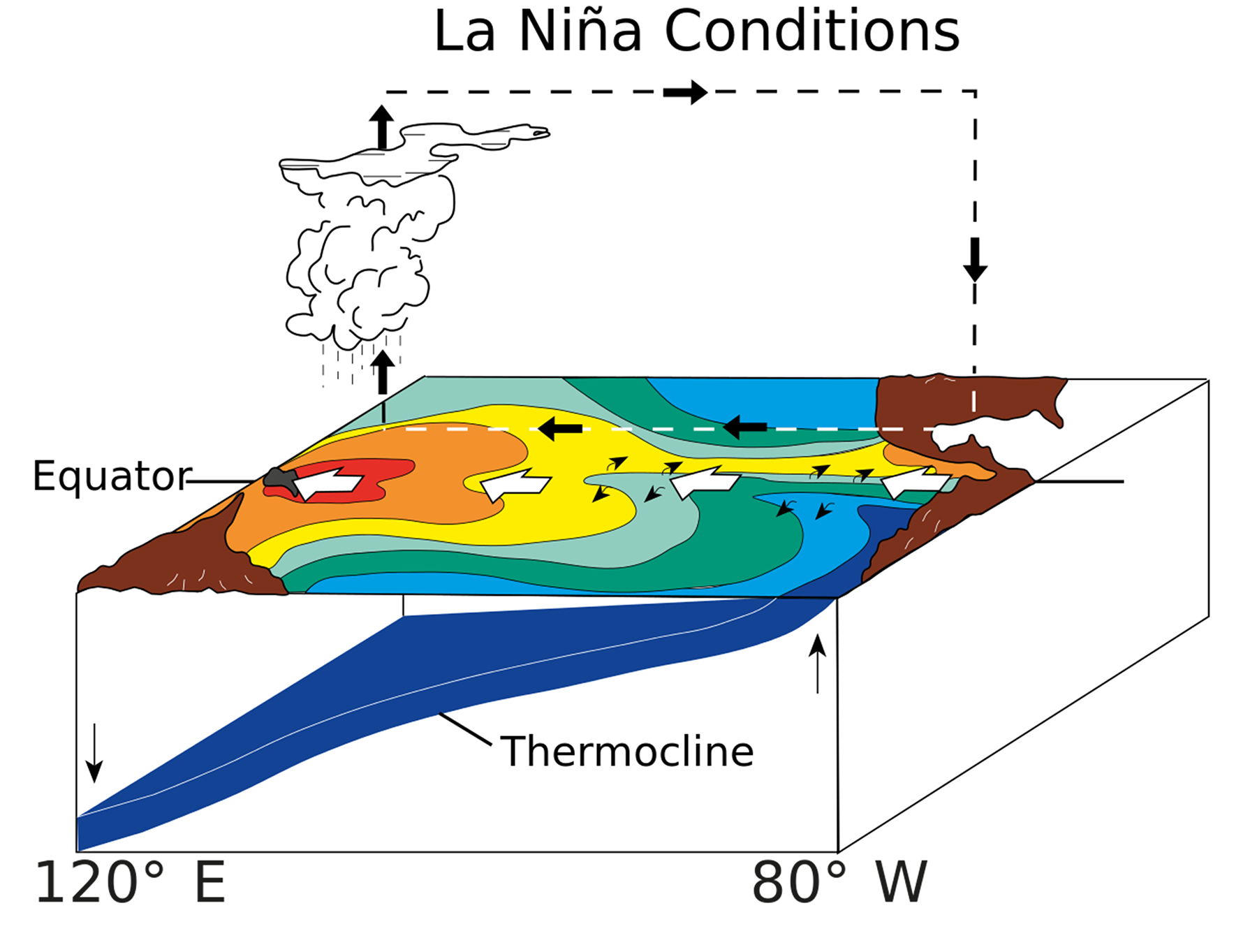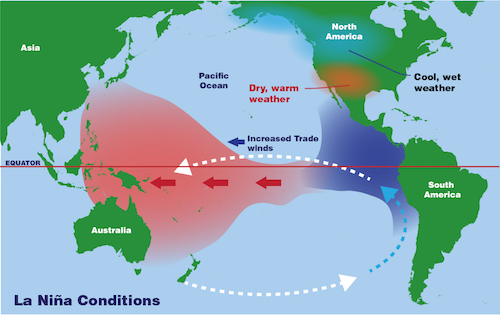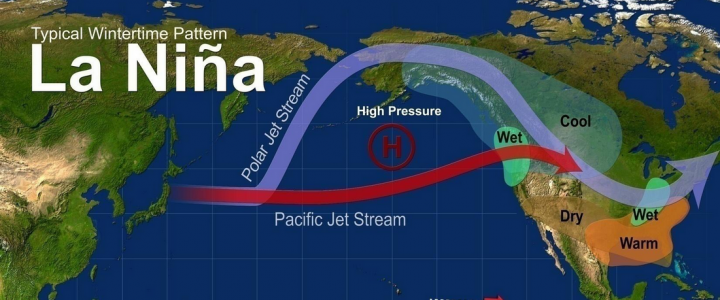La Nina Water Temperature Australia
The major ocean currents in the Australian region. The Bureau of Meteorology BoM has declared a La Niña weather event for 2021 with much of Australias east and north facing a cool damp and stormy summer.

Maps Of The Pacific Ocean Composite Maps Of Sea Surface Temperature Download Scientific Diagram
The 2010-12 La Nina cycle was powerful and devastating.
La nina water temperature australia. La Niña conditions have developed in the ocean sea surface and subsurface temperature with some signs of La Niña conditions in the atmosphere OLR 1 and wind anomalies. The last significant La Niña occurred in 201012 and led to a record strong summer Leeuwin Current. Marine heatwaves also developed during the 201112 and.
But La Niña brings some advantages including cooler temperatures over the summer which can typically soar well above 30 degrees Celsius 86 degrees Fahrenheit. La Nina is part of a cycle known as the El Nino-Southern Oscillation ENSO a naturally occurring shift in ocean temperatures and weather patterns along the equator in the Pacific Ocean. During La Niña phases Australia experiences lower day time temperatures as well as increased risk of widespread flooding and tropical cyclones throughout the summer months.
The weather event could boost Australias wheat. La Niña events are indicated by sea-surface temperature decreases of more than 5 degrees Celsius 9 degrees Fahrenheit for at least five successive three-month seasons. La Nina is typically associated with greater rainfall more tropical cyclones and cooler than average temperatures in the equatorial Pacific Ocean.
The Nino34 index was -072C for September 2021 and -063C for the July September 2021 three-month average. Bureau of Meteorology senior climatologist Blair Trewin said the change in water temperature has broader impacts on climate including. Several i ndicators of the El Niño Southern Oscillation ENSO now show clear La Niña patterns.
Events that maintain index values close to these thresholds are generally classified as moderate to weak while those that greatly exceed them are referred to as strong. The second image shows the temperatures during the strong 20152016 El Nino event. The winds blow harder than usual causing warm water to pool around Asia while surface temperatures across the rest of the Pacific fall.
The La Nina weather phenomenon linked to the shifting pattern of sea surface temperatures through the Pacific and Indian Oceans affects rainfall and temperature variations in. Can we predict La Niña rainfall. Obvious again is the cold tongue of cooler ocean water during a.
La Niña events increase the chance of above average rainfall across much of northern and eastern Australia during summer. During these La Niña events surface water in the central and eastern equatorial Pacific cools and the ocean to the north of Australia tends to warm. Increased water temperatures in the west leads to increased evaporation rainfall and more tropical cyclones in this region.
Despite this 2020 was Australia. La Niña events are typically defined when SOI values are sustained above 7 and NINO34 temperatures are more than 08 C below average. Whats a Ningaloo Niño.
La Niña also increases the chance of. The first image shows the current sea surface temperatures of the new La Nina. La Niña is caused by a build-up of cooler-than-normal waters in the tropical Pacific the area of the Pacific Ocean between the Tropic of Cancer and the Tropic of Capricorn.
As a consequence of the warmer water more evaporation means more rainfall over Australia. During a La Niña there are warmer than average waters in the western Pacific near Australia and cooler than average in the east. La Niña is a broad-scale circulation in the Pacific Ocean that is characterised by warmer-than-average sea surface temperatures near Australia and abnormally cool water in the central and eastern equatorial Pacific Ocean.
The La Nina weather phenomenon linked to the shifting pattern of sea surface temperatures through the Pacific and Indian Oceans affects rainfall and temperature variations in Australia. This led to record summer ocean temperatures up to 5 C above average down the WA coast in FebruaryMarch 2011. Changes in the ocean drive changes in the.
Australia has said a La Niña event has developed for a second consecutive year meaning there is a greater risk locally of floods and cyclones. Last time the weather phenomenon contributed to. They must slip by 08C below the average for Australia.
La Niña events are indicated by sea-surface temperature decreases of more than 5 degrees Celsius 9 degrees Fahrenheit for at least five successive three-month seasons. Australia experienced a weak La Niña event last summer resulting in the coolest summer in nine years and wettest in four years with 29 more rain than average. La Niña is caused by a build-up of cooler-than-normal waters in the tropical Pacific the area of the Pacific Ocean between the Tropic of Cancer and the Tropic of Capricorn.
Unfortunately no two La Niñas occur in the same way. La Niña events usually bring average to above average rain to much of Australias east. Climate models suggest this La Niña will be short-lived persisting until the late southern hemisphere summer or early autumn 2022.
During La Nina waters in the central or eastern tropical Pacific become cooler than normal persistent winds from the east strengthen around the equator in the Pacific and the. The La Nina weather phenomenon linked to the shifting pattern of sea surface temperatures through the Pacific and Indian Oceans affects rainfall and temperature variations in.

9 6 El Nino And La Nina Introduction To Oceanography
La Nina Faqs El Nino Theme Page A Comprehensive Resource

What Is La Nina Nasa Space Place Nasa Science For Kids

Posting Komentar untuk "La Nina Water Temperature Australia"